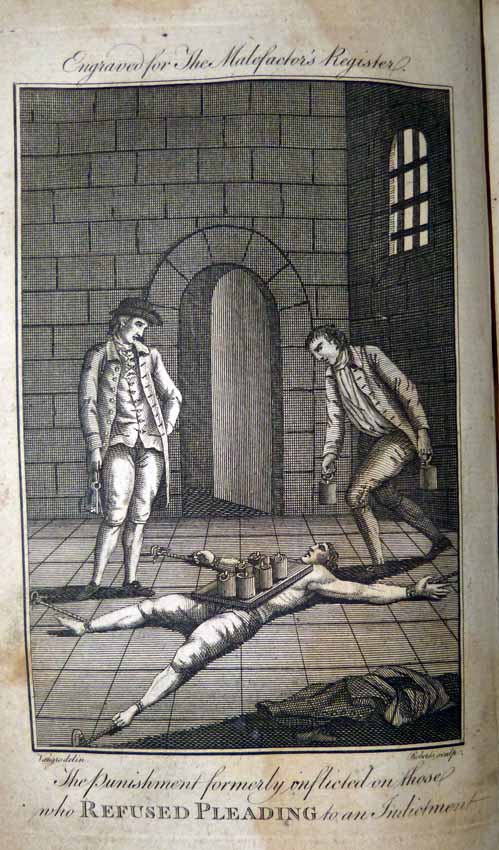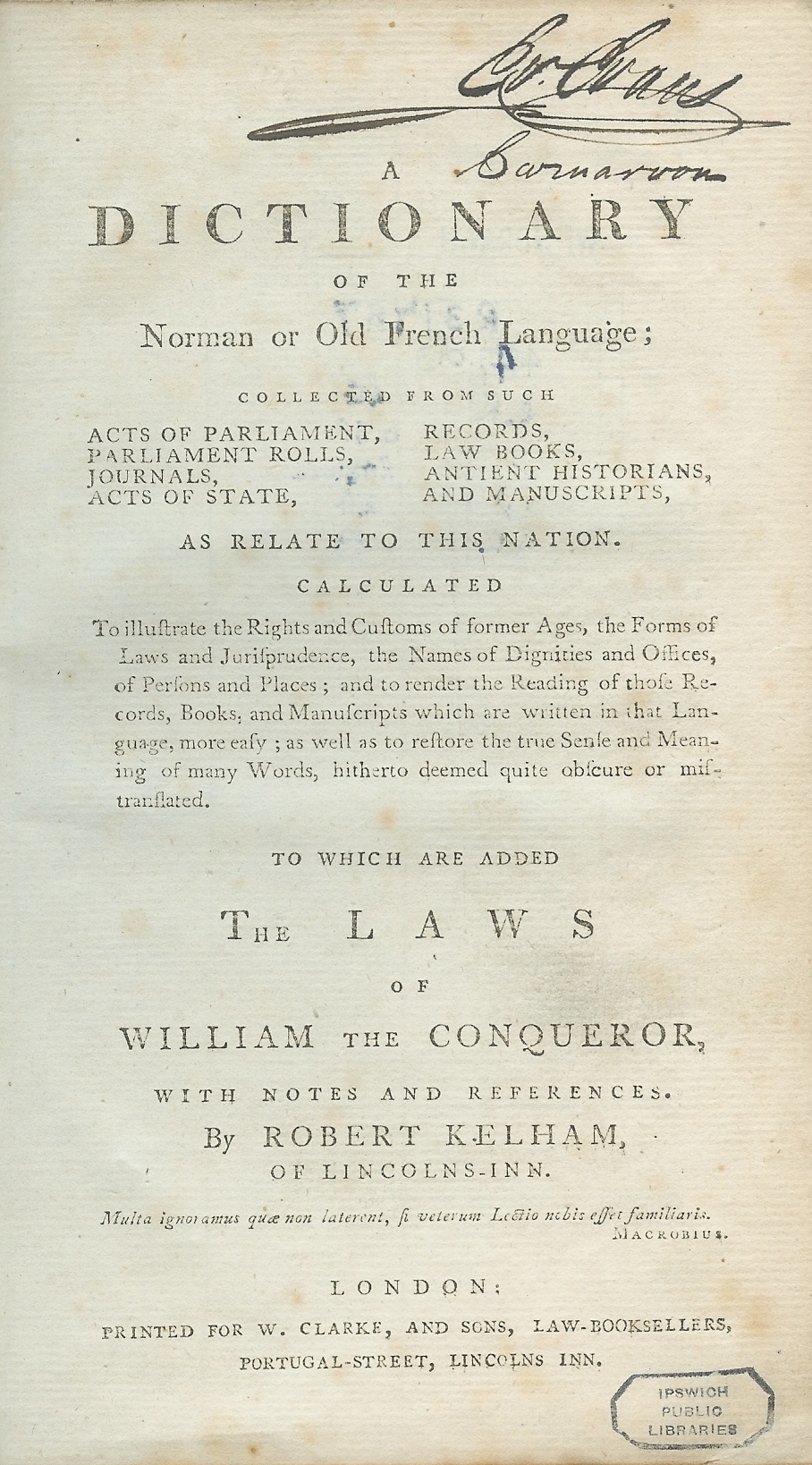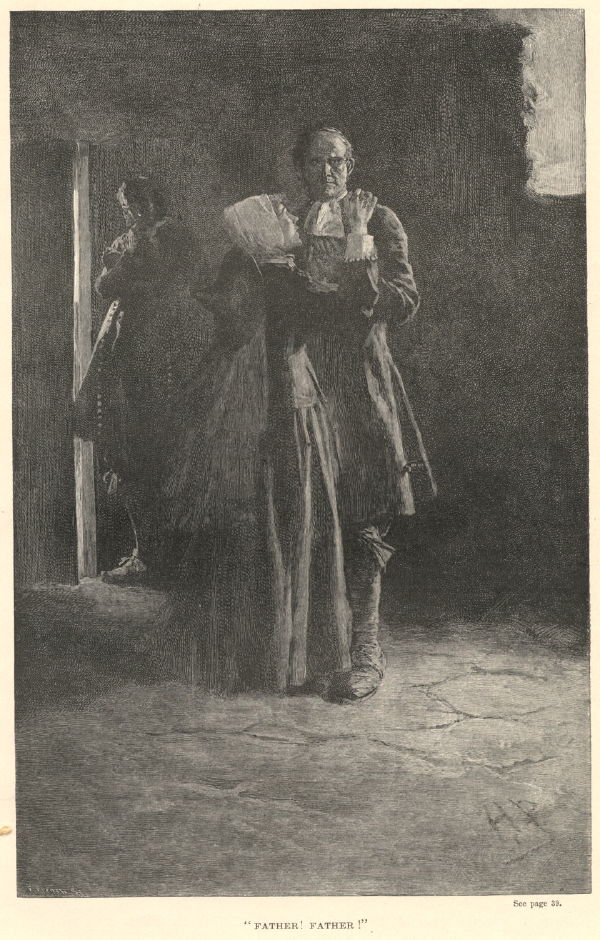|
Peine Forte Et Dure
' (Law French for "hard and forceful punishment") was a method of torture formerly used in the common law legal system, in which a defendant who refused to plead ("stood mute") would be subjected to having heavier and heavier stones placed upon his or her chest until a plea was entered, or death resulted. Many defendants charged with capital offences would refuse to plead in order to avoid forfeiture of property. If the defendant pleaded either guilty or not guilty and was executed, their heirs would inherit nothing, their property escheating to the State. If they refused to plead their heirs would inherit their estate, even if they died in the process. Legal background The common law courts originally took a very limited view of their own jurisdiction. They considered themselves to lack jurisdiction over a defendant until he had voluntarily submitted to it by entering a plea seeking judgment from the court. Obviously, a criminal justice system that could punish only those who ... [...More Info...] [...Related Items...] OR: [Wikipedia] [Google] [Baidu] |
Law French
Law French ( nrf, Louai Français, enm, Lawe Frensch) is an archaic language originally based on Old Norman and Anglo-Norman, but increasingly influenced by Parisian French and, later, English. It was used in the law courts of England, beginning with the Norman conquest of England in 1066. Its use continued for several centuries in the courts of England and Wales and Ireland. Although Law French as a narrative legal language is obsolete, many individual Law French terms continue to be used by lawyers and judges in common law jurisdictions (see the section "Survivals in modern legal terminology", below). History The earliest known documents in which ''French'' (i.e. Anglo-Norman) is used for discourse on English law date from the third quarter of the thirteenth century and include two particular documents. The first is '' The Provisions of Oxford'' (1258), consisting of the terms of oaths sworn by the 24 magnates appointed to rectify abuses in the administration of King H ... [...More Info...] [...Related Items...] OR: [Wikipedia] [Google] [Baidu] |
Edward I Of England
Edward I (17/18 June 1239 – 7 July 1307), also known as Edward Longshanks and the Hammer of the Scots, was King of England and Lord of Ireland from 1272 to 1307. Concurrently, he ruled the duchies of Aquitaine and Gascony as a vassal of the French king. Before his accession to the throne, he was commonly referred to as the Lord Edward. The eldest son of Henry III, Edward was involved from an early age in the political intrigues of his father's reign, which included a rebellion by the English barons. In 1259, he briefly sided with a baronial reform movement, supporting the Provisions of Oxford. After reconciliation with his father, however, he remained loyal throughout the subsequent armed conflict, known as the Second Barons' War. After the Battle of Lewes, Edward was held hostage by the rebellious barons, but escaped after a few months and defeated the baronial leader Simon de Montfort at the Battle of Evesham in 1265. Within two years the rebellion was extin ... [...More Info...] [...Related Items...] OR: [Wikipedia] [Google] [Baidu] |
The Crucible
''The Crucible'' is a 1953 play by American playwright Arthur Miller. It is a dramatized and partially fictionalized story of the Salem witch trials that took place in the Massachusetts Bay Colony during 1692–93. Miller wrote the play as an allegory for McCarthyism, when the United States government persecuted people accused of being communists. Miller was questioned by the House of Representatives' Committee on Un-American Activities in 1956 and convicted of contempt of Congress for refusing to identify others present at meetings he had attended. The play was first performed at the Martin Beck Theatre on Broadway on January 22, 1953, starring E. G. Marshall, Beatrice Straight and Madeleine Sherwood. Miller felt that this production was too stylized and cold, and the reviews for it were largely hostile (although ''The New York Times'' noted "a powerful play n adriving performance"). The production won the 1953 Tony Award for Best Play. A year later a new production suc ... [...More Info...] [...Related Items...] OR: [Wikipedia] [Google] [Baidu] |
Salem Witch Trials
The Salem witch trials were a series of hearings and prosecutions of people accused of witchcraft in colonial Massachusetts between February 1692 and May 1693. More than 200 people were accused. Thirty people were found guilty, 19 of whom were executed by hanging (14 women and five men). One other man, Giles Corey, was pressed to death after refusing to enter a plea, and at least five people died in jail. Arrests were made in numerous towns beyond Salem and Salem Village (known today as Danvers), notably Andover and Topsfield. The grand juries and trials for this capital crime were conducted by a Court of Oyer and Terminer in 1692 and by a Superior Court of Judicature in 1693, both held in Salem Town, where the hangings also took place. It was the deadliest witch hunt in the history of colonial North America. Only fourteen other women and two men had been executed in Massachusetts and Connecticut during the 17th century. The episode is one of Colonial America's most no ... [...More Info...] [...Related Items...] OR: [Wikipedia] [Google] [Baidu] |
Giles Corey
Giles Corey ( August 1611 – September 19, 1692) was an English-born American farmer who was accused of witchcraft along with his wife Martha Corey during the Salem witch trials. After being arrested, Corey refused to enter a plea of guilty or not guilty. He was subjected to pressing in an effort to force him to plead—the only example of such a sanction in American history—and died after three days of this torture. Because Corey refused to enter a plea, his estate passed on to his sons instead of being seized by the local government. Corey is believed to have died in the field adjacent to the prison that had held him, in what later became the Howard Street Cemetery in Salem, which opened in 1801. His exact grave location in the cemetery is unmarked and unknown. There is a memorial plaque to him in the nearby Charter Street Cemetery. Pre-trial history Giles Corey was born in Northampton, England. He was baptized in the church of the Holy Sepulchre on August 16, 1611. Gi ... [...More Info...] [...Related Items...] OR: [Wikipedia] [Google] [Baidu] |
John Weekes
John is a common English name and surname: * John (given name) * John (surname) John may also refer to: New Testament Works * Gospel of John, a title often shortened to John * First Epistle of John, often shortened to 1 John * Second Epistle of John, often shortened to 2 John * Third Epistle of John, often shortened to 3 John People * John the Baptist (died c. AD 30), regarded as a prophet and the forerunner of Jesus Christ * John the Apostle (lived c. AD 30), one of the twelve apostles of Jesus * John the Evangelist, assigned author of the Fourth Gospel, once identified with the Apostle * John of Patmos, also known as John the Divine or John the Revelator, the author of the Book of Revelation, once identified with the Apostle * John the Presbyter, a figure either identified with or distinguished from the Apostle, the Evangelist and John of Patmos Other people with the given name Religious figures * John, father of Andrew the Apostle and Saint Peter * Pope J ... [...More Info...] [...Related Items...] OR: [Wikipedia] [Google] [Baidu] |
Major Strangways
Major (commandant in certain jurisdictions) is a military rank of commissioned officer status, with corresponding ranks existing in many military forces throughout the world. When used unhyphenated and in conjunction with no other indicators, major is one rank above captain, and one rank below lieutenant colonel. It is considered the most junior of the field officer ranks. Background Majors are typically assigned as specialised executive or operations officers for battalion-sized units of 300 to 1,200 soldiers while in some nations, like Germany, majors are often in command of a company. When used in hyphenated or combined fashion, the term can also imply seniority at other levels of rank, including ''general-major'' or ''major general'', denoting a low-level general officer, and ''sergeant major'', denoting the most senior non-commissioned officer (NCO) of a military unit. The term ''major'' can also be used with a hyphen to denote the leader of a military band such ... [...More Info...] [...Related Items...] OR: [Wikipedia] [Google] [Baidu] |
William Spiggot
William Spiggot (also spelled Spigget) was a highwayman who was captured by Jonathan Wild's men in 1721. During his trial at the Old Bailey, he at first refused to plead and was therefore sentenced to be pressed until he pleaded. This was called ''Peine forte et dure''. He was later executed, after a second trial when he pleaded not guilty, on 11 February 1721 at Tyburn, London. Biography William Spiggot or Spigget was born in Hereford, England. His father was an innkeeper (or ostler in the English of the time) at the ''Chief Inn''. He was married (probably at 19 years old) and he had three children. He declared that he was an apprentice to a cabinet-maker or joiner in Hereford. He is best known for his criminal life as a highwayman. Criminal Life For about seven to twelve years, William Spiggot was a highwayman and the leader of a gang of at least eight men. He performed his robberies on the roads from London to Hounslow Heath, Kingston and Ware. The exact number of ... [...More Info...] [...Related Items...] OR: [Wikipedia] [Google] [Baidu] |
Priest
A priest is a religious leader authorized to perform the sacred rituals of a religion, especially as a mediatory agent between humans and one or more deities. They also have the authority or power to administer religious rites; in particular, rites of sacrifice to, and propitiation of, a deity or deities. Their office or position is the 'priesthood', a term which also may apply to such persons collectively. A priest may have the duty to hear confessions periodically, give marriage counseling, provide prenuptial counseling, give spiritual direction, teach catechism, or visit those confined indoors, such as the sick in hospitals and nursing homes. Description According to the trifunctional hypothesis of prehistoric Proto-Indo-European society, priests have existed since the earliest of times and in the simplest societies, most likely as a result of agricultural surplus and consequent social stratification. The necessity to read sacred texts and keep temple or church rec ... [...More Info...] [...Related Items...] OR: [Wikipedia] [Google] [Baidu] |
Margaret Clitherow
Margaret Clitherow (1556 – 25 March 1586) was an English saint and martyr of the Roman Catholic Church, known as "the Pearl of York". She was pressed to death for refusing to enter a plea to the charge of harbouring Catholic priests. She was canonised in 1970 by Pope Paul VI. Life Margaret Clitherow was born in 1556, one of five children of Thomas and Jane Middleton. Her father was a respected businessman, a wax-chandlery, chandler and Sheriff#Great Britain and Ireland, Sheriff of York in 1564,Camm, Bede. "St. Margaret Clitherow." The Catholic Encyclopedia Vol. 4. New York: Robert Appleton Company, 1908. 27 March 2016 who died when Margaret was fourteen. In 1571, she married John Clitherow, a wealthy butcher and a chamberlain of the city, and bore him three children; the family lived at tod ... [...More Info...] [...Related Items...] OR: [Wikipedia] [Google] [Baidu] |
Christian Martyr
In Christianity, a martyr is a person considered to have died because of their testimony for Jesus or faith in Jesus. In years of the early church, stories depict this often occurring through death by sawing, stoning, crucifixion, burning at the stake or other forms of torture and capital punishment. The word ''martyr'' comes from the Koine word μάρτυς, ''mártys'', which means "witness" or "testimony". At first, the term applied to Apostles. Once Christians started to undergo persecution, the term came to be applied to those who suffered hardships for their faith. Finally, it was restricted to those who had been killed for their faith. The early Christian period before Constantine I was the "Age of Martyrs". "Early Christians venerated martyrs as powerful intercessors, and their utterances were treasured as inspired by the Holy Spirit." In western Christian art, martyrs are often shown holding a palm frond as an attribute, representing the victory of spirit over f ... [...More Info...] [...Related Items...] OR: [Wikipedia] [Google] [Baidu] |
Catholic Church
The Catholic Church, also known as the Roman Catholic Church, is the largest Christian church, with 1.3 billion baptized Catholics worldwide . It is among the world's oldest and largest international institutions, and has played a prominent role in the history and development of Western civilization.O'Collins, p. v (preface). The church consists of 24 ''sui iuris'' churches, including the Latin Church and 23 Eastern Catholic Churches, which comprise almost 3,500 dioceses and eparchies located around the world. The pope, who is the bishop of Rome, is the chief pastor of the church. The bishopric of Rome, known as the Holy See, is the central governing authority of the church. The administrative body of the Holy See, the Roman Curia, has its principal offices in Vatican City, a small enclave of the Italian city of Rome, of which the pope is head of state. The core beliefs of Catholicism are found in the Nicene Creed. The Catholic Church teaches that it is the on ... [...More Info...] [...Related Items...] OR: [Wikipedia] [Google] [Baidu] |








.jpg)
.jpg)